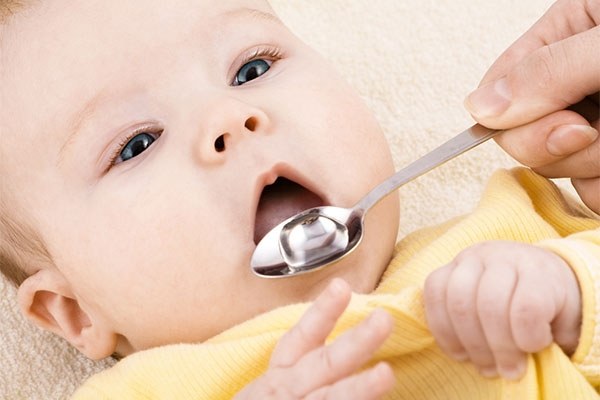Aqueous solution of vitamin D3 is assigned to all children for prevention of rickets. Start with the first month of life and continue to 2-3 years, as this period in children, there is an active formation of the skeleton. Full-term children with normal body weight provided breastfeeding appoint 1-2 drops of an aqueous solution of vitamin D3 (500-1000 IU). Premature babies, children with malnutrition, twins, children who live in adverse conditions, including adverse social, environmental and climatic conditions, prescribe 2-3 drops of the drug (1500-2000 IU), reception continues up to 3 years. In the summertime, taking vitamin reduce to 500 IU.
Children who have a predisposition to early closure of the fontanelles, vitamin D is prescribed very careful, regular medical supervision. During the first year of life the child should visit the pediatrician every month, the doctor examines the baby, checks the state of the fontanelles and skull bone and make a decision on the continuation of vitaminopodobnye, increase or decrease the daily dose.
Children first year of life, which are on the artificial or mixed feeding, the dosage of the vitamin is calculated individually. Often milk formulas already contain vitamin D, but because additionally to give it is either not required or it is given in smaller amounts. If you need to give at least 500 IU, the vitamin is diluted in a teaspoon of water and give half a serving or in a day.
Vitamin D given in the first half of the day, dripping out of the bottle, the dropper directly into mouth or diluted in a little water. Keep the aqueous solution at temperatures up to 25 ° C in a dark place, as light destroys vitamin D.
Prophylactic administration of vitamin D is compulsory for all children residing on the territory of our country. The lack of natural lighting, the short daylight hours in winter and the impossibility of long walks in the winter due to frost is not allowed to receive the necessary amount of vitamin D naturally. The lack of vitamin D may experience developmental delay, rickets, disorders of calcium metabolism and radiophobia disease. Many children even after treatment of rachitis there remain changes in the skeletal system, bone erosion, and improper formation of the skeleton.
Modern water-soluble drugs are completely safe and even in case of accidental overdose easily excreted without causing complications.
Children who have a predisposition to early closure of the fontanelles, vitamin D is prescribed very careful, regular medical supervision. During the first year of life the child should visit the pediatrician every month, the doctor examines the baby, checks the state of the fontanelles and skull bone and make a decision on the continuation of vitaminopodobnye, increase or decrease the daily dose.
Children first year of life, which are on the artificial or mixed feeding, the dosage of the vitamin is calculated individually. Often milk formulas already contain vitamin D, but because additionally to give it is either not required or it is given in smaller amounts. If you need to give at least 500 IU, the vitamin is diluted in a teaspoon of water and give half a serving or in a day.
Vitamin D given in the first half of the day, dripping out of the bottle, the dropper directly into mouth or diluted in a little water. Keep the aqueous solution at temperatures up to 25 ° C in a dark place, as light destroys vitamin D.
Prophylactic administration of vitamin D is compulsory for all children residing on the territory of our country. The lack of natural lighting, the short daylight hours in winter and the impossibility of long walks in the winter due to frost is not allowed to receive the necessary amount of vitamin D naturally. The lack of vitamin D may experience developmental delay, rickets, disorders of calcium metabolism and radiophobia disease. Many children even after treatment of rachitis there remain changes in the skeletal system, bone erosion, and improper formation of the skeleton.
Modern water-soluble drugs are completely safe and even in case of accidental overdose easily excreted without causing complications.
